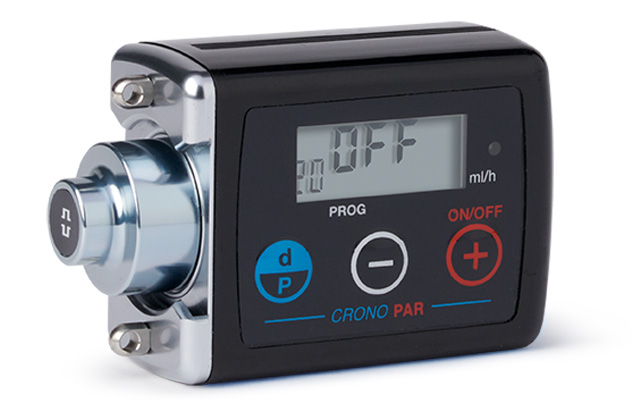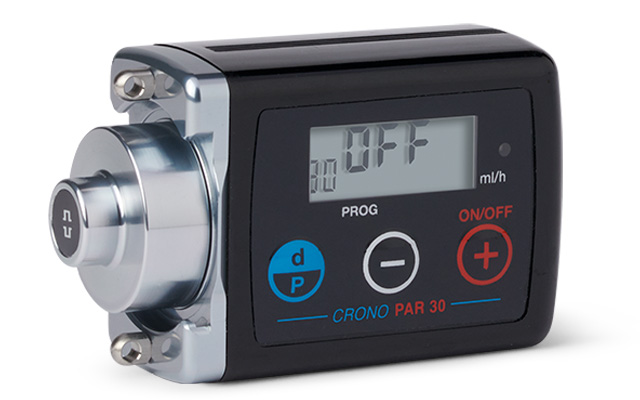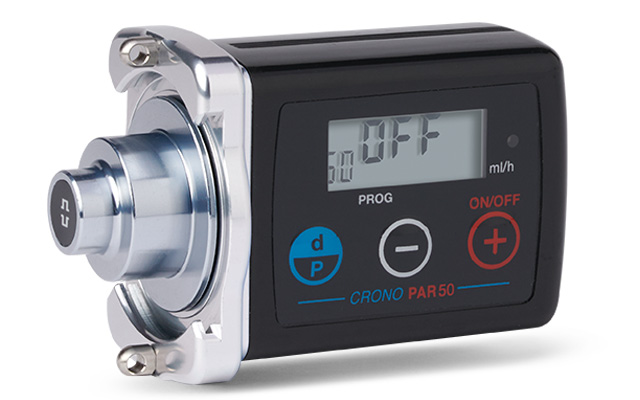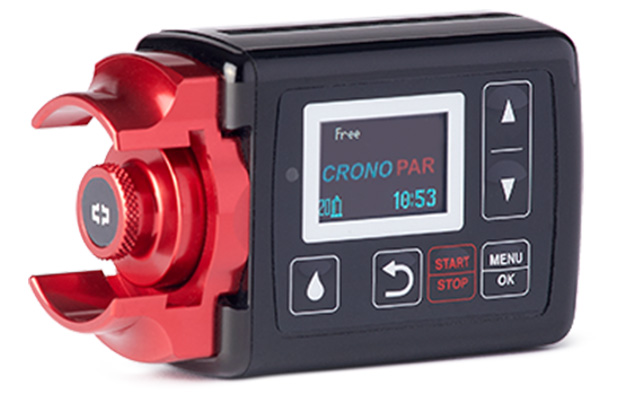Parkinson's disease
infusion pump and apomorphine therapy
The disease is named after James Parkinson, a 19th century London surgeon, who was the first to describe its symptoms in a book: “A Treatise on Agitating Paralysis”.
Parkinson's disease is characterised by the slow but progressive degeneration of the nerve structures that make up the extrapyramidal system.
The first symptoms of Parkinson's disease emerge when the production of dopamine is considerably reduced, and the main motor disorders are characterised by: tremor at rest, stiffness, slow movement and balance.
Parkinson's disease generally affects individuals over the age of fifty, the causes of which are not yet fully known.
Currently, there is no cure to completely recover from Parkinson's disease, but there are treatments to improve the quality of life of those living with this disease.
Attack therapy for the treatment of Parkinson's disease aims to replace dopamine through the administration of levodopa or oral dopamine agonists.
While it is true that oral therapy for the treatment of Parkinson's disease can significantly improve the clinical characteristics for several years, up to 80% of patients develop complications to the motor response, characterised by motor fluctuations such as an end-of-dose effect and dyskinesias.
There are treatments for Parkinson's disease that are aimed at improving the quality of life of those living with this disease.
One of these is infusion pump therapy, which administers a dopamine agonist drug called apomorphine under the skin.
Treatment with an infusion pump reduces the patient's tremor and typical stiffness, allowing him/her to walk with better movement control.
The subcutaneous administration of apomorphine, using suitably programmed portable infusers, has proved effective in controlling the drawbacks of pulsatile therapy and therefore represents an extremely valid and useful therapeutic strategy.
All patients in the advanced stage of Parkinson's disease have a potential indication for treatment by means of an infusion pump with apomorphine, as this administration strategy is the one that comes closest to physiological dopaminergic stimulation.
CANÈ SpA has specifically designed and manufactured the Crono PAR portable infusion pump for the subcutaneous infusion of Apomorphine.
Apomorphine is the oldest of the dopaminergic drugs and was initially known for its anti-emetic properties.
The drug has been used in various medical conditions such as pain, insomnia, alcohol dependence and schizophrenia.
After an initial subcutaneous use in the treatment of Parkinson's disease, apomorphine was neglected for several years following the introduction of orally administered levodopa.
Apomorphine is the most potent of the dopamine agonists and may reduce symptoms in similar measure to levodopa.
The drug is characterised by rapid absorption after subcutaneous injection and by a short half-life (approximately 43 min.).
Effects occur within 5-15 minutes after subcutaneous administration via injection pen or infusion pump.
Subcutaneous administration of apomorphine, using a portable infusion pump, has been shown to be effective in controlling the complications of the disease.
The selection and management of patients who have to undergo this therapy for Parkinson's disease is fundamental; these are usually patients with motor fluctuations and moderate to severe dyskinesia, which cannot be resolved with standard therapeutic approaches (redistribution of oral doses of levodopa, the addition of COMT inhibitors, amantadine, selegiline and oral dopaminergic agonists).
In these patients, apomorphine infusion pump therapy results in a significant reduction in "off" hours and involuntary movements.
Patients who have shown a good “on” period during the first phase of Parkinson's disease treatment with apomorphine, but who require more than 10 injections per day with an infusion pen, may be recommended to start continuous infusion pump therapy.
The dosage will be determined according to the patient's needs, as each person needs the portable infuser treatment to be customised according to the daily apomorphine requirement.
The Crono Par infusion pump is able to autonomously administer different pre-set flows during the 24-hour day, allowing the doctor to customise the treatment of Parkinson's disease for each patient.
The apomorphine infusion pump therapy does not require surgical interventions on the patient, thus proving to be one of the least invasive solutions for treating the advanced stage of Parkinson's disease.
The small size and light weight (127 g) of the infusion pump make Crono PAR ideal for home use.
The infusion pump can be worn by means of a fabric cord, or at the waist with the aid of a case (similar to that for mobile phones), ensuring discretion during the course of therapy.
Associated products
The products described in this website are covered by the EU declaration of conformity, so they are intended for the EU market, with the declared intended purpose.
For non-EU markets such as the US, please contact CANÈ S.p.A. to identify the correct product and the corresponding destination of use.



